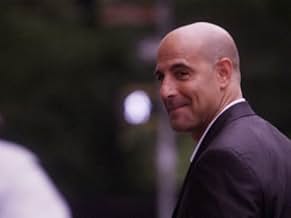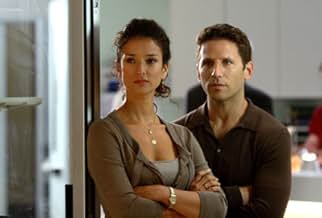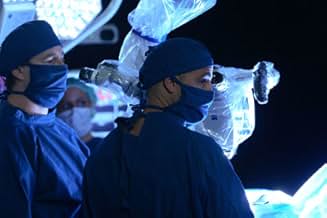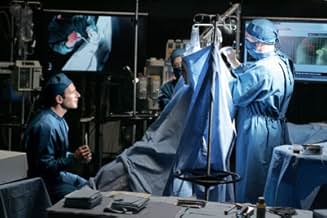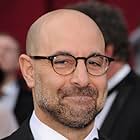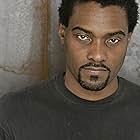An arrogant neurosurgeon takes on a new partner.An arrogant neurosurgeon takes on a new partner.An arrogant neurosurgeon takes on a new partner.
Browse episodes
Storyline
Did you know
- TriviaOnly 5 out of 8 episodes aired on CBS.
- Quotes
Dr. Douglas Hanson: Why do you do this Seger?
Dr. Jonathan Seger: Care?
Dr. Douglas Hanson: Oh stop, that's too easy. No, try to put yourself in their shoes?
Dr. Jonathan Seger: Oh, because fourth year I took a seminar entitled "Putting Yourself in Their Shoes".
Featured review
"Did you know the human head weighs eight pounds?"
You might, if you saw the film "Jerry Maguire," where precocious Jonathan Lipnicki says that line; one of many quotable quotes from that movie.
But you may not have realized that three of those eight pounds is the human brain. That's where the title for this program originates.
Let's be clear. Television has trends and when a show becomes a hit series, every network wants a piece of that action. In this case, the show that this program was aspiring to be was Fox's "House, MD," which was the current hit medical drama of the day, about a team of doctors researching mysterious diseases, week to week.
It goes without saying that many people think that those who live in and around New York City have to be losing their grey matter. That's where this team of surgeons and physicians comes in!
Here, Stanley Tucci, as Dr. Douglas Hanson, the impatient, know-it-all, head of the the Neuro wing named for himself, and his team, including Hanson's newcomer assistant Dr. Jonathan Seger, played by Mark Feuerstein, were there to mind their patients as they dealt with their tumors, aneurysms and strokes.
Much like Dr. Gregory House on that other series I mentioned, Dr. Hanson here has a bothersome little problem with his own condition, which, of course, he keeps quiet, but the viewers can see the elements in his mind as he deals with his visions and demons when he's not mouthing off to his second, or flirting with his female coworkers, or the single moms of his daughter's (Addison Timlin) classmates.
The most interesting quality about this series is they were trying to expose what we know about how the brain works, what elements are connected and perhaps more importantly, what we still DON'T know about this organ of ours that controls most everything we think, write, say and do, and acts as a recorder and storage space for everything we encounter. That's a worthwhile effort, even if they had to simplify things so the jargon didn't get too technical for the non-medical student viewers.
Indira Varma provides a welcome relief from the not always friendly banter between Doctors Hanson and Seger as Dr. Adrienne Holland, the neurologist intent on solving problems and prepping those she encounters for what comes next. But even she rubbed Dr. Seger the wrong way.
New York plays a part, in that the name "Bellevue" has come to be associated with both mental disorders and The City, and though this hospital is clearly not THAT one, it shares the real life reputation of that other institution for being run-down and on the mend, with issues that create problems occasionally, like power outages at just the wrong moment.
As a bit of an aside, from a strictly behind-the-scenes perspective, Mr. Tucci didn't want to have to fly to Los Angeles to make this series, so the production accommodated him by shooting in NYC.
The special effects used were fascinating: when a patient has an episode, we see into their body, the brain stem, the spinal cord, the sinew and muscle that moves and get a glimpse as to what is happening, in real time. This was cutting edge stuff for 2006 and, in most cases, was cooler than the scripts for the stories being told.
But the problem was that those stories told were relentless, with some visual metaphors to help the audience understand what was happening to the patients, at least, and the embattled staff dealing with their temperamental and possibly cranially challenged leader. There wasn't much of a break between the patients' issues and Dr. Hanson's attitude and circumstances.
In the end, it seemed like the "3 lbs" was made up of two pounds, fifteen ounces of vinegar and only one ounce of honey, and that just seemed to give its viewers a headache.
You might, if you saw the film "Jerry Maguire," where precocious Jonathan Lipnicki says that line; one of many quotable quotes from that movie.
But you may not have realized that three of those eight pounds is the human brain. That's where the title for this program originates.
Let's be clear. Television has trends and when a show becomes a hit series, every network wants a piece of that action. In this case, the show that this program was aspiring to be was Fox's "House, MD," which was the current hit medical drama of the day, about a team of doctors researching mysterious diseases, week to week.
It goes without saying that many people think that those who live in and around New York City have to be losing their grey matter. That's where this team of surgeons and physicians comes in!
Here, Stanley Tucci, as Dr. Douglas Hanson, the impatient, know-it-all, head of the the Neuro wing named for himself, and his team, including Hanson's newcomer assistant Dr. Jonathan Seger, played by Mark Feuerstein, were there to mind their patients as they dealt with their tumors, aneurysms and strokes.
Much like Dr. Gregory House on that other series I mentioned, Dr. Hanson here has a bothersome little problem with his own condition, which, of course, he keeps quiet, but the viewers can see the elements in his mind as he deals with his visions and demons when he's not mouthing off to his second, or flirting with his female coworkers, or the single moms of his daughter's (Addison Timlin) classmates.
The most interesting quality about this series is they were trying to expose what we know about how the brain works, what elements are connected and perhaps more importantly, what we still DON'T know about this organ of ours that controls most everything we think, write, say and do, and acts as a recorder and storage space for everything we encounter. That's a worthwhile effort, even if they had to simplify things so the jargon didn't get too technical for the non-medical student viewers.
Indira Varma provides a welcome relief from the not always friendly banter between Doctors Hanson and Seger as Dr. Adrienne Holland, the neurologist intent on solving problems and prepping those she encounters for what comes next. But even she rubbed Dr. Seger the wrong way.
New York plays a part, in that the name "Bellevue" has come to be associated with both mental disorders and The City, and though this hospital is clearly not THAT one, it shares the real life reputation of that other institution for being run-down and on the mend, with issues that create problems occasionally, like power outages at just the wrong moment.
As a bit of an aside, from a strictly behind-the-scenes perspective, Mr. Tucci didn't want to have to fly to Los Angeles to make this series, so the production accommodated him by shooting in NYC.
The special effects used were fascinating: when a patient has an episode, we see into their body, the brain stem, the spinal cord, the sinew and muscle that moves and get a glimpse as to what is happening, in real time. This was cutting edge stuff for 2006 and, in most cases, was cooler than the scripts for the stories being told.
But the problem was that those stories told were relentless, with some visual metaphors to help the audience understand what was happening to the patients, at least, and the embattled staff dealing with their temperamental and possibly cranially challenged leader. There wasn't much of a break between the patients' issues and Dr. Hanson's attitude and circumstances.
In the end, it seemed like the "3 lbs" was made up of two pounds, fifteen ounces of vinegar and only one ounce of honey, and that just seemed to give its viewers a headache.
- How many seasons does 3 lbs. have?Powered by Alexa
Details
Contribute to this page
Suggest an edit or add missing content


